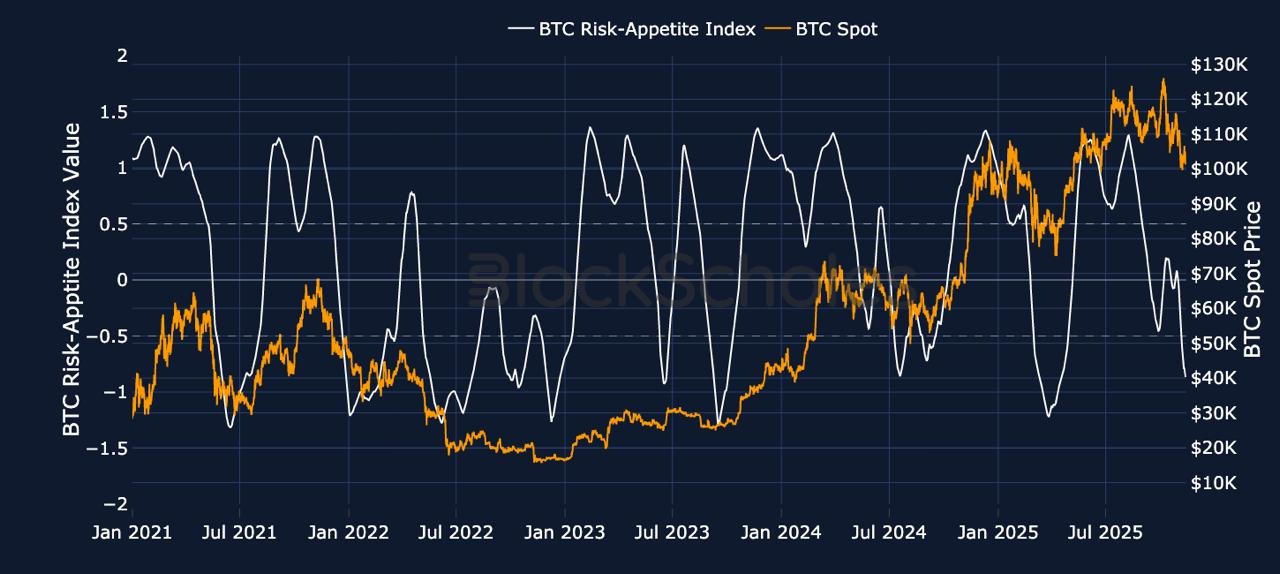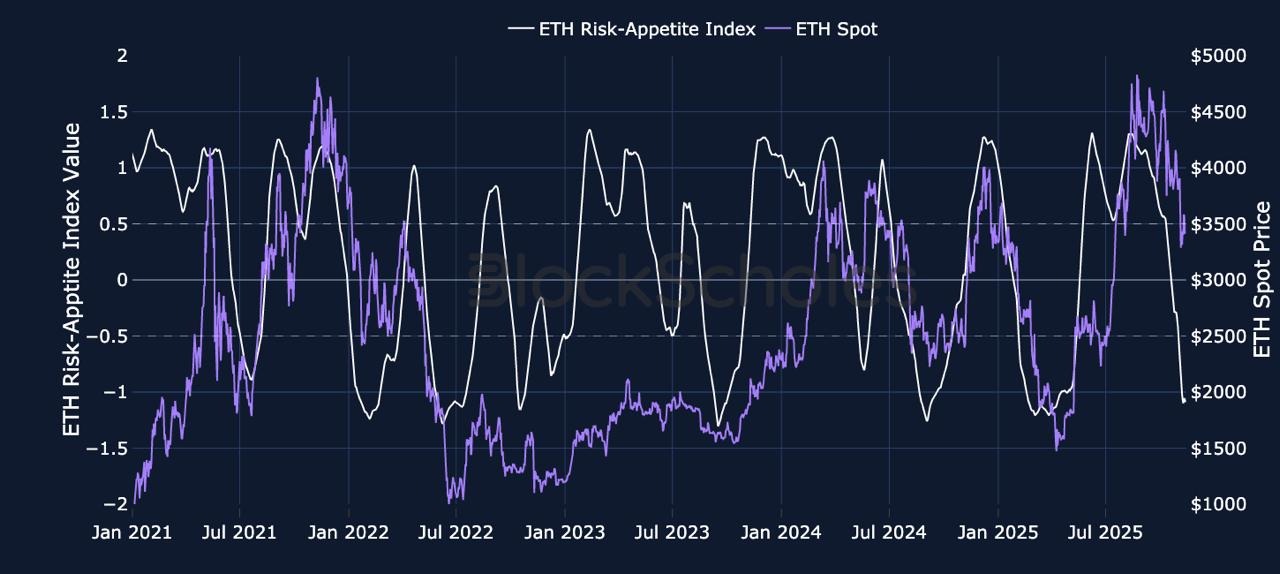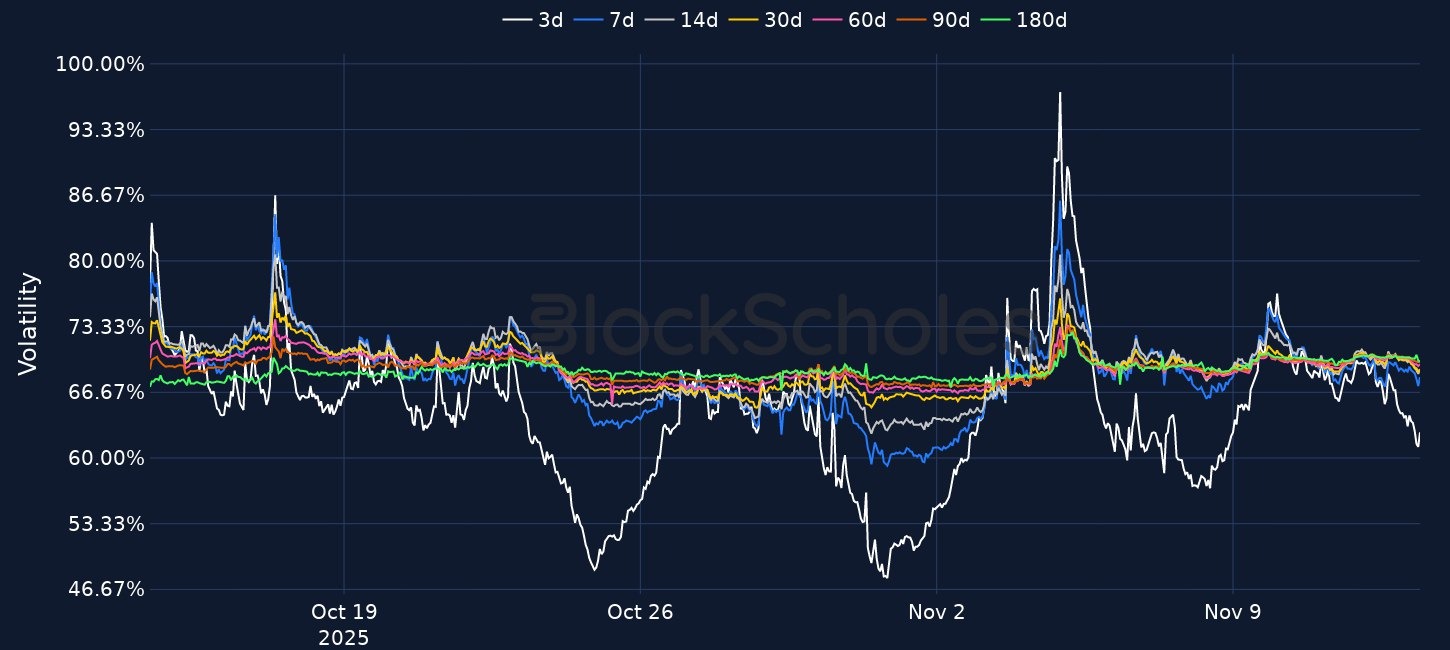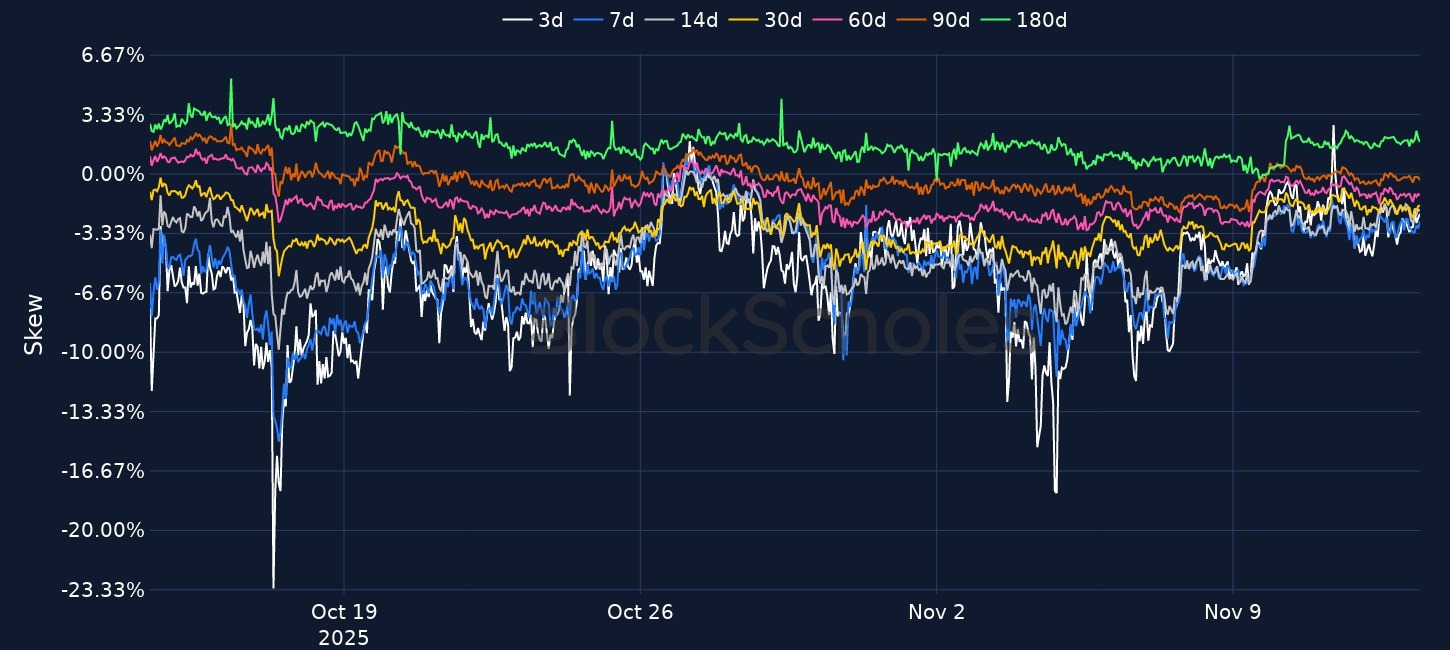“WE ARE SO BACK”
BTC has retraced to ~$102k from >$107k, with derivatives and ETF flows signalling weak dip-buying: short-tenor futures are below spot, option skews are put-heavy, and spot ETFs have offloaded ~$71m of BTC since 29 Oct. US risk assets diverged, with the S&P 500 up 0.93% and UST yields lower after an interim funding bill ended the 43-day government shutdown but left October NFP and CPI data likely permanently missing. Fed communication remains hawkish-leaning despite the data vacuum, with key officials stressing inflation risks, limited room for further cuts and a high bar for additional easing absent a clear labour-market deterioration. Structurally, tokenisation and digital-asset rails continue to advance via the SEC’s proposed “token taxonomy”, MAS’s tokenised bill pilot, Franklin Templeton’s Benji expansion, CME/FanDuel’s prediction app and Sui’s new USDsui stablecoin.

Find out our latest reports, listed below:
Market Snapshot: Overnight Moves
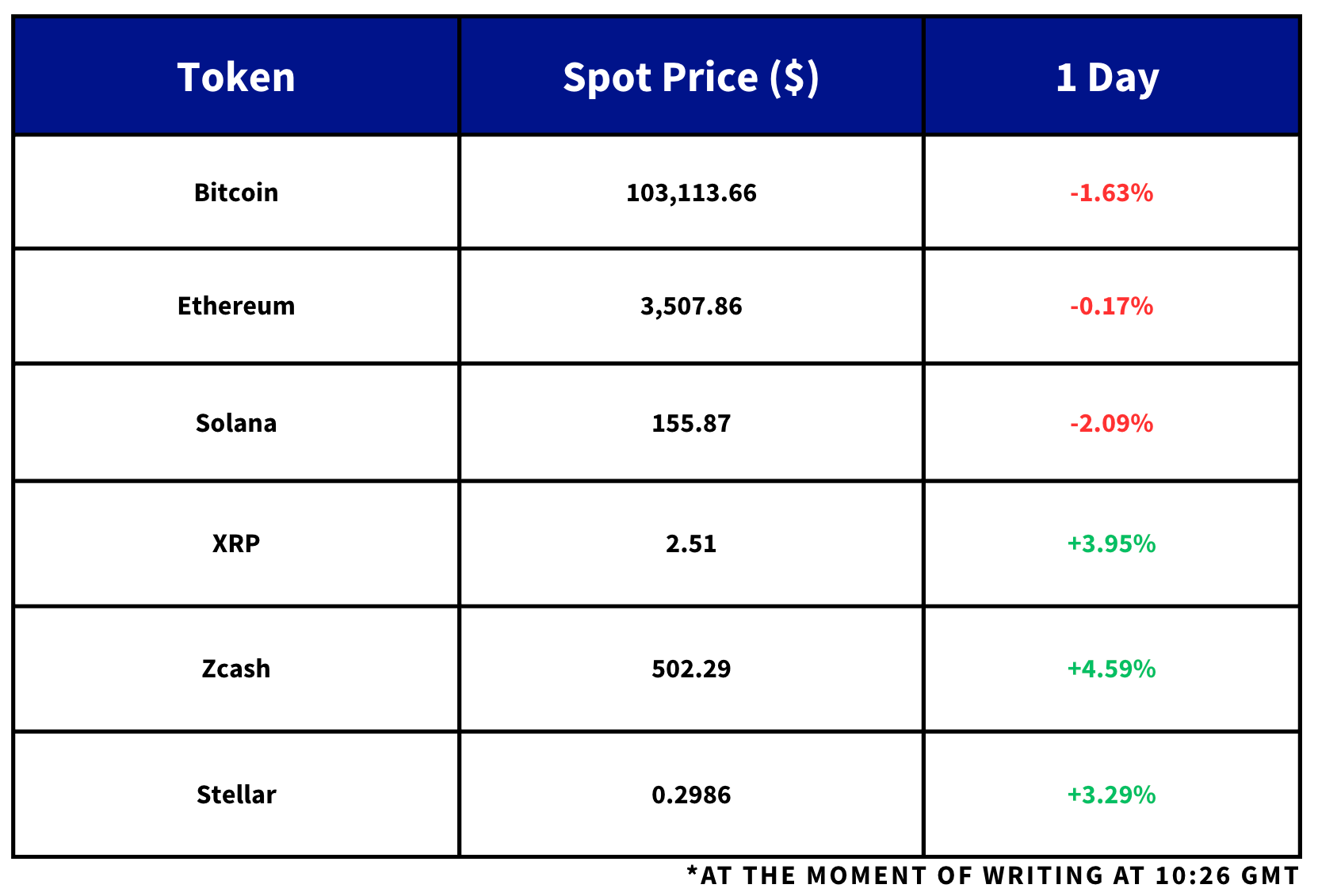
Daily Updates:
- After exceeding $107K earlier in the week, BTC now trades at $102K with few signs of recovery from the downward trend that began from mid-October.
- Funding rates in perpetual swap markets are modestly positive (though that’s an improvement from earlier in the week when they dipped below 0%), short-tenor futures yields are negative — suggesting futures prices trade below spot price, and in options markets, tenors across the term structure all trade with a premium towards put contracts.
- That lack of conviction from derivatives markets for any meaningful recovery back towards ATH’s for BTC is also reflected in Spot Bitcoin ETF inflows.
- Between Oct 29, 2025 and Nov 5, 2025, Spot ETFs saw 6 consecutive days of outflows. Since Nov 6, 2025, flows have fluctuated, though over the whole period, Spot ETFs have still sold $71.4M of bitcoins.
- While crypto continues to lag behind, US equities pushed higher for another session with the S&P 500 closing 0.93% higher, while US treasury bond yields fell.
- The US House voted 222 to 209 to pass an interim funding bill yesterday that was then signed by President Trump, bringing an end to the record breaking 43-day government shutdown.
- Markets had been expecting that following the government shutdown, the BLS would be able to release the delayed October jobs report and CPI report.
- On Tuesday however, the White House’s National Economic Director Kevin Hassett said on CNBC “I’ve been told that some of the surveys were never actually completed, so we’ll never, perhaps, even know what happened in that month”, referring to the surveys used to collect data for the nonfarm payrolls report.
- Additionally, according to White House Press Secretary yesterday, “The Democrats may have permanently damaged the federal statistical system with October CPI and jobs reports likely never being released”.
- Leavitt added that the lack of data is “leaving our policymakers at the Fed flying blind at a critical period.”
- In fact, recent speeches from Fed officials show just how divided policymakers' views are on the US economy, a division worsened by the past six weeks of a lack of official data.
- In a speech titled ‘Weighing the Risks: Why Inflation Tips the Scales’, Atlanta Fed President Raphael Bostic said that “Despite shifts in the labor market, the clearer and urgent risk is still price stability”.
- According to the Fed official, who is not a voting member, “Across all our information sources, I see little to no evidence that we should be sanguine about the forward trajectory of inflation.”
- Boston President Susan Collins, who is a voting member of the board, also said that she believes the balance of risks may be tilted towards inflation.
- During a speech yesterday, Collins said that she saw October’s rate cut as “prudent”, though now sees “several reasons to have a relatively high bar for additional easing in the near term”.
- Collins added that “providing additional monetary support to economic activity runs the risk of slowing – or possibly even stalling – the return of inflation to target … Absent evidence of a notable labor market deterioration, I would be hesitant to ease policy further, especially given the limited information on inflation due to the government shutdown.”
- Earlier in the week on Monday, St. Louis Fed President Alberto Musalem, also a voting member, told Bloomberg TV that current Fed policy is close to the level where it would no longer put downward pressure on inflation — “It is very important that we tread with caution, because I believe there’s limited room for further reductions without monetary policy becoming overly accommodative”.
- Additionally, we also note that Kansas President Jeffrey Schmid voted against October’s rate cut. In early November, he justified his stance by arguing “I do not think a 25-basis point reduction in the policy rate will do much to address stresses in the labor market that more likely than not arise from structural changes in technology and demographics … However, a cut could have longer-lasting effects on inflation if the Fed’s commitment to its 2% inflation objective comes into question.”
- Yesterday evening, SEC Chair Paul Atkins outlined plans for a new “token taxonomy” to spell out which digital assets fall under securities law, keeping the Howey Test at its core but recognising that tokens can transition away from being investment contracts as networks decentralise.
- Framed as part of the SEC’s “Project Crypto” pivot from ad hoc enforcement to clearer rulemaking, the initiative is meant to give the industry more predictability without softening the agency’s stance on fraud or unregistered tokenized securities. Atkins also stated that the framework is designed to work alongside, not replace, ongoing Congressional efforts on broader crypto market structure legislation.
- The Monetary Authority of Singapore is preparing a pilot programme to issue tokenised MAS bills to primary dealers, settling them in wholesale CBDC, with full details expected next year.
- In a speech at the Singapore FinTech Festival, Managing Director Chia Der Jiun said tokenisation has clearly moved into real-world use, but has not yet reached mass adoption, despite benefits such as 24/7 settlement, reduced intermediation and more efficient collateral usage.
- CME Group and FanDuel are set to launch FanDuel Predicts in the U.S. next month, a standalone prediction markets app offering event contracts on sports, crypto prices, commodities, equities and other key benchmarks.
- Franklin Templeton has extended the availability of its Benji token, tokenized shares of its money market fund, on to the Canton Network, aiming to increase institutional adoption of the token.
- Sui is introducing USDsui, a native stablecoin created through Bridge’s Open Issuance platform, to act as the “foundational stablecoin” for the Sui network. From launch, it will be supported by Sui-based wallets, DeFi apps and protocols, and will be compatible with other Bridge-issued stablecoins used on platforms including Phantom, Hyperliquid, and MetaMask.
This Week’s Calendar:
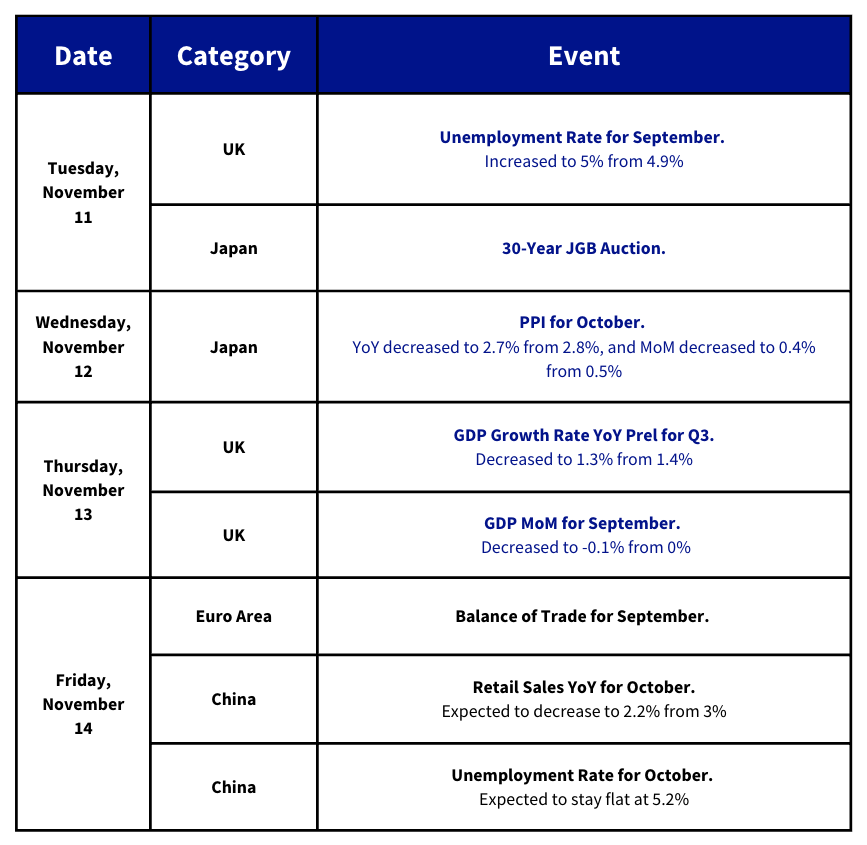
Charts of the Day:
